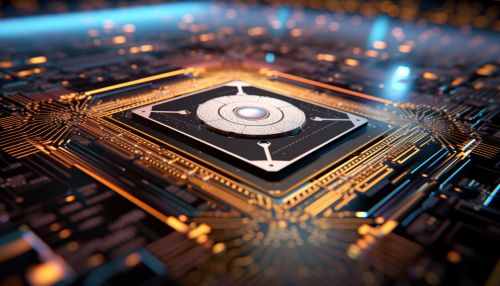Spintronics in Quantum Computing
Introduction
Spintronics, or spin electronics, is an emerging field of nanoscale electronics involving the detection and manipulation of electron spin. Unlike traditional electronics which rely on the charge of an electron, spintronics exploits the quantum spin properties of electrons to encode and process information. The integration of spintronics with quantum computing has the potential to revolutionize the way we process and store information, leading to computers that are significantly faster and more efficient than current models.


Spintronics Basics
The basic principle of spintronics is the use of the spin of an electron, which can be either up or down, to carry information. This is in contrast to traditional electronics, which use the charge of an electron to carry information. The spin of an electron is a quantum property, meaning it can exist in multiple states simultaneously. This property, known as quantum superposition, allows for the possibility of processing vast amounts of information simultaneously, a key advantage of quantum computing.
Quantum Computing
Quantum computing is a type of computation that makes direct use of quantum-mechanical phenomena, such as superposition and quantum entanglement, to perform operations on data. Quantum computers are different from binary digital electronic computers based on transistors. Whereas common digital computing requires that the data be encoded into binary digits (bits), each of which is always in one of two definite states (0 or 1), quantum computation uses quantum bits or 'qubits', which can be in a superposition of states.
Spintronics in Quantum Computing
The integration of spintronics into quantum computing is a promising avenue for the development of new computing technologies. The use of electron spin in quantum computing allows for the possibility of creating qubits, the basic units of information in a quantum computer, that can exist in multiple states simultaneously. This is due to the quantum property of superposition, which allows particles to exist in multiple states at once.
In a quantum computer, a qubit can be both a 0 and a 1 at the same time, allowing for a vast increase in computing power. By using spintronics, it is possible to manipulate these qubits to perform complex calculations at speeds far exceeding those of traditional computers.
Challenges and Future Directions
Despite the promising potential of spintronics in quantum computing, there are several challenges that need to be overcome. One of the main challenges is the difficulty in controlling and measuring the spin of an electron. Additionally, the spin of an electron is very sensitive to environmental factors, making it difficult to maintain a stable quantum state.
However, ongoing research in the field of spintronics and quantum computing is aimed at overcoming these challenges. Future directions include the development of new materials and technologies for controlling and detecting electron spin, as well as the integration of spintronic devices into existing computer architectures.
